The Urban Chinese
中国城市人
http://nitawriter.wordpress.com/2007/05/31/the-urban-chinese/
http://www.ltaaa.com/bbs/thread-36902-2-1.html
http://nitawriter.wordpress.com/2007/05/31/the-urban-chinese/
http://www.ltaaa.com/bbs/thread-36902-2-1.html
May 31, 2007
What struck me about the Chinese cities were its people. Smart, fashionable,
active and hardworking. In this piece I have also also written a little about
their dressing style, their social customs and their lifestyle as all these are
interlinked. Its all how I saw it, and the observations are my own personal
ones. I claim no understanding of the Chinese, this is simply what I saw.
2007年5月31日
关于中国城市我 感触最深的是它的人民。智能,时尚,积极,勤奋。在这一块,我也写了他们的穿衣风格,他们的社会习俗和他们的生活方式,因为所有这些都是相通的。所有意见是我个人的观察。我不声称了解中国人,这仅仅是我所看到的。
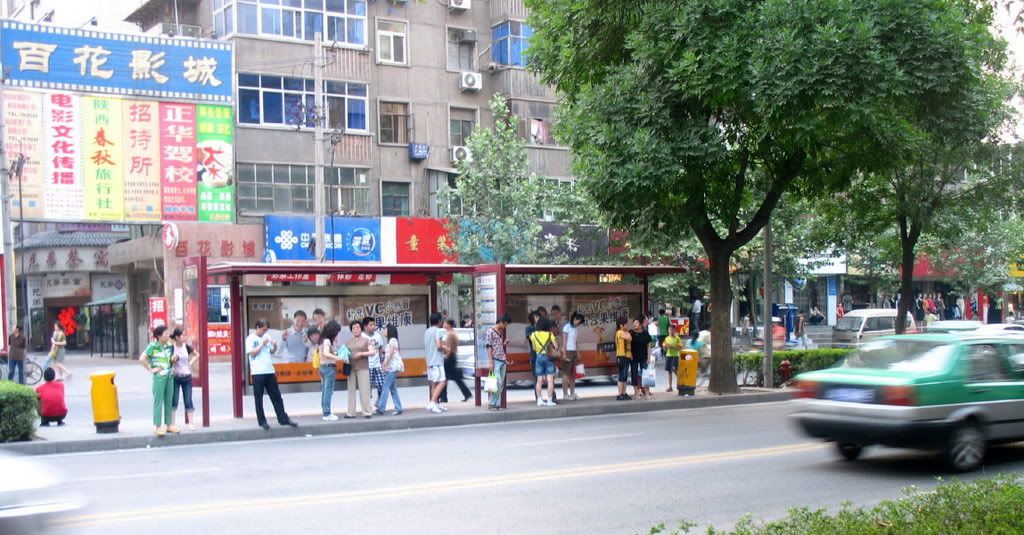
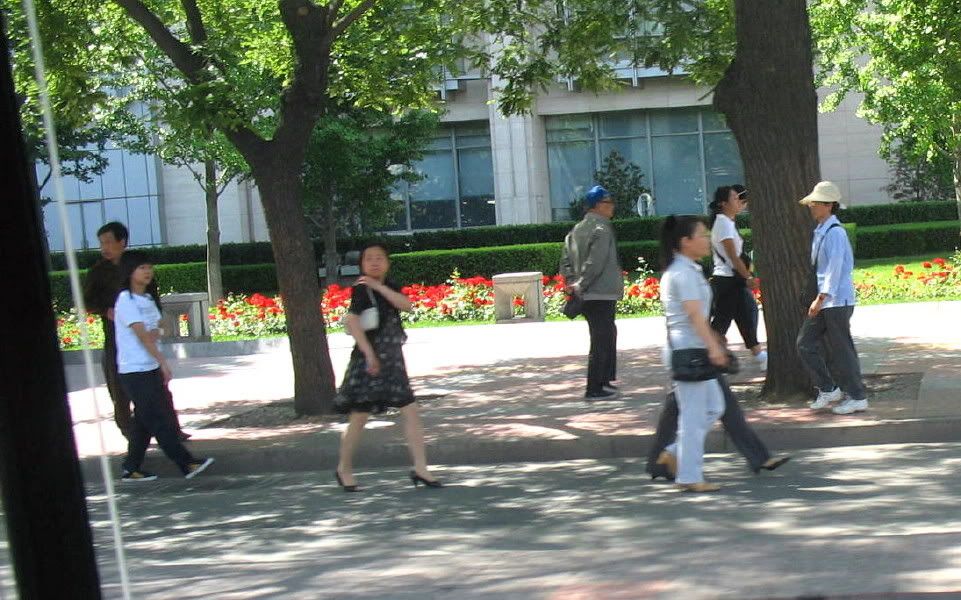
One thing that hits you about the Chinese if you come from India is the number of women on the streets, behind counters, in offices, and well…everywhere! This is not surprising as I was told that more than 90 per cent of women work outside the home. And both men and women wear western clothes. In India you will find that it is the men who have discarded the traditional clothes, but women continue to wear them. During my visit to China I did not see a single woman in traditional dress. I have explained this later on in my write-up.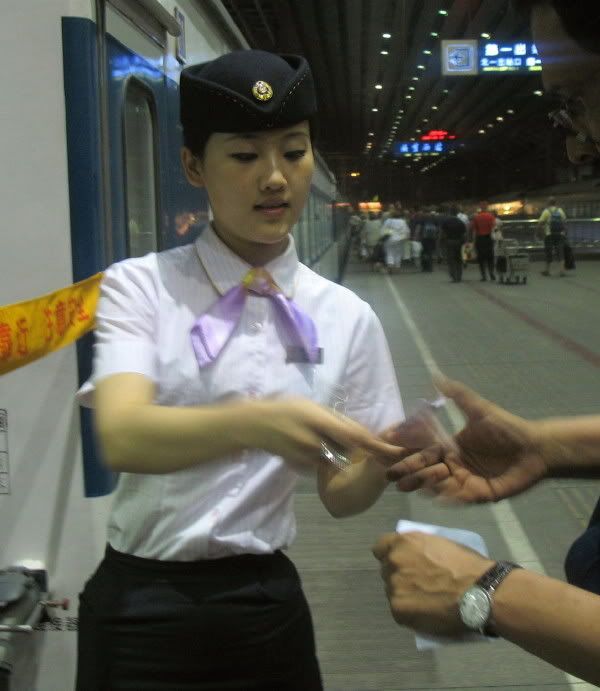 I wasn’t sure why almost all women work outside
the home, but perhaps it could be something to do with the one-child policy.
Whether you are a boy or girl, you are the only earning member of the family.
While there are some matriarchal societies in China (Mosuo), they are an ethnic
minority. China is mostly a patriarchal society, yet you find most women out
there – working. The one-child policy seems to have tilted the male female ratio
in favour of the men. The ratio is not as bad as India’s – but its bad enough.
There are 112-120 boys for 100 women and this has resulted in a shortage of
wives. But if you look at China’s cities, there is no evidence of it. Plenty of
women! In the provinces, there could be a problem. During our short visit, a
mainstream English newspaper came out with an article about how villagers were
being harassed if they had more than one child. In rural China the government
has found it rather more difficult to implement the one-child policy or to
monitor female foeticide.
I wasn’t sure why almost all women work outside
the home, but perhaps it could be something to do with the one-child policy.
Whether you are a boy or girl, you are the only earning member of the family.
While there are some matriarchal societies in China (Mosuo), they are an ethnic
minority. China is mostly a patriarchal society, yet you find most women out
there – working. The one-child policy seems to have tilted the male female ratio
in favour of the men. The ratio is not as bad as India’s – but its bad enough.
There are 112-120 boys for 100 women and this has resulted in a shortage of
wives. But if you look at China’s cities, there is no evidence of it. Plenty of
women! In the provinces, there could be a problem. During our short visit, a
mainstream English newspaper came out with an article about how villagers were
being harassed if they had more than one child. In rural China the government
has found it rather more difficult to implement the one-child policy or to
monitor female foeticide.
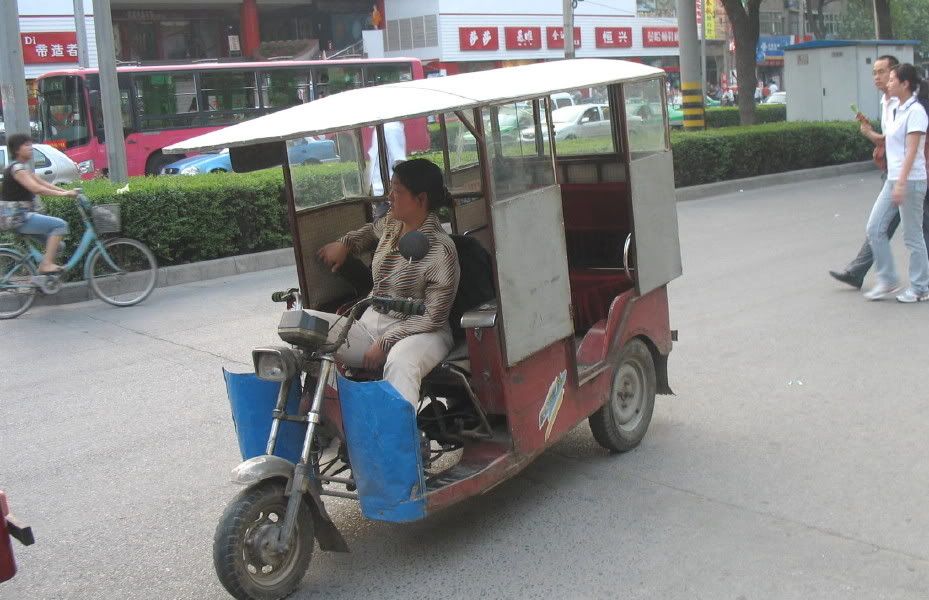
It was rather nice to see women work side by side with the men. Whether it was the toll booth, the railway station at night, in the fields (agriculture) or behind the wheel of a rickshaw – there were women as well as men. And they all either wore trousers (like the woman above) or western style skirts. In Beijing and Shanghai people are fashionable. I saw several girls in micro-minis (the girl on the right is wearing long shorts by comparison) and high heels.
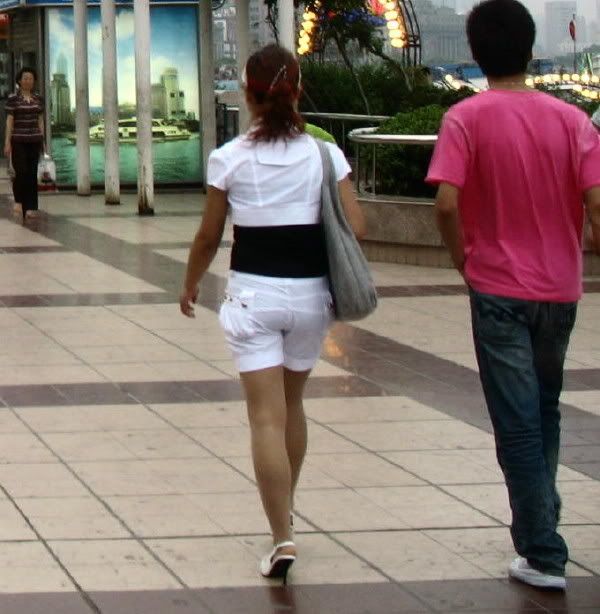
There is zero staring. And can you believe it – the village women wear pants and T-shirts when they till the fields. Inspite of being poor, there seems to be no pressure on the women to cover their bodies. In India this is unheard of. Rural women have no choice but to wear the traditional dress in India. Ofcourse one does find that in rural India women tend to shorten the traditional costume or wear it in such a way that gives them freedom of movement. After all, they have to work! So what happened to the traditional Chipau, the long dress that Chinese women used to wear down the ages? I asked many people but no one could give a satisfactory answer. Some said the Chipao was inconvenient, some said it was ugly, some said western clothes were better. One person told me that it was Mao who made the pant and shirt compulsory!
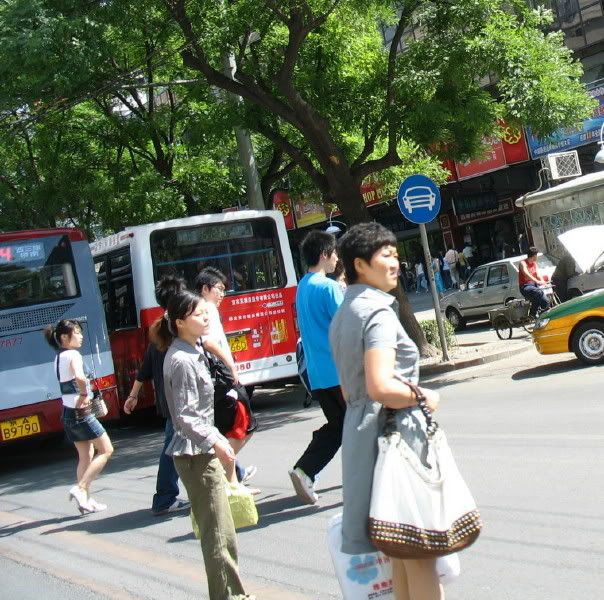
But as luck would have it, that night in our hotel BBC beamed a programme on why the Chipao had died out. It was way back in the 1920’s, due to the influence of the west that Chinese women began to experiment with the Chipao. The Chipao started to become figure hugging, shorter (showing the ankles) and different styles started to flood the market. The older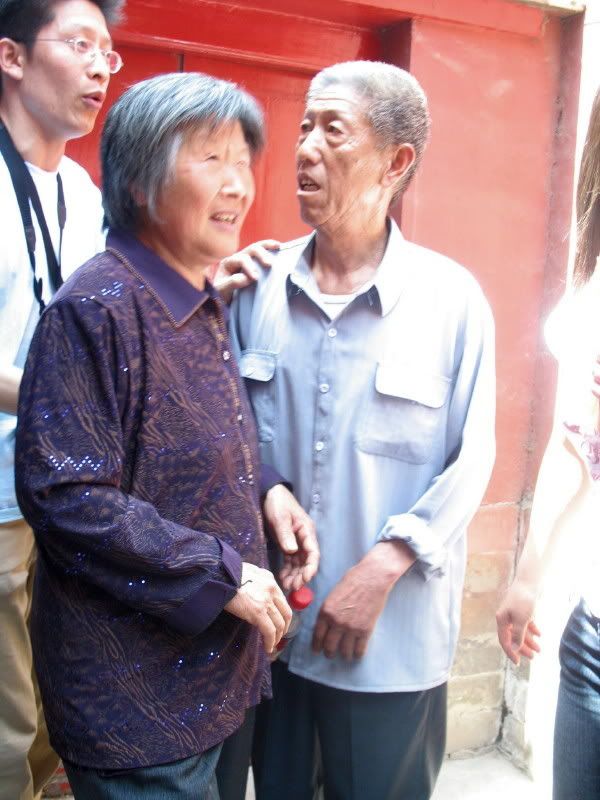 generation was scandalised, specially because the legs
were increasingly seen, but it was a fact that by the late forties and early
fifties the Chipao was no longer the loose tube like garment meant to hide a
woman’s figure. In fact, by the late fifties, the Chipao started to disappear
altogether, and western clothes started to take over.
generation was scandalised, specially because the legs
were increasingly seen, but it was a fact that by the late forties and early
fifties the Chipao was no longer the loose tube like garment meant to hide a
woman’s figure. In fact, by the late fifties, the Chipao started to disappear
altogether, and western clothes started to take over.
Today, the elderly as well as the young, the poor as well as the rich, the rural as well as the urban, the men and the women – everyone has discarded the traditional Chinese dress. If you want to see a woman in a Chipao you need to to see a period play, a dance performance, a special party or a shop where the heavily embroidered fancy Chipao’s are for sale. Maybe the Chinese wear them at weddings, but I was told this tradition has faded out too. The Western white long flowing dress is often worn by the bride. So much for the influence of the west!
2007年5月31日
关于中国城市我 感触最深的是它的人民。智能,时尚,积极,勤奋。在这一块,我也写了他们的穿衣风格,他们的社会习俗和他们的生活方式,因为所有这些都是相通的。所有意见是我个人的观察。我不声称了解中国人,这仅仅是我所看到的。


One thing that hits you about the Chinese if you come from India is the number of women on the streets, behind counters, in offices, and well…everywhere! This is not surprising as I was told that more than 90 per cent of women work outside the home. And both men and women wear western clothes. In India you will find that it is the men who have discarded the traditional clothes, but women continue to wear them. During my visit to China I did not see a single woman in traditional dress. I have explained this later on in my write-up.
 I wasn’t sure why almost all women work outside
the home, but perhaps it could be something to do with the one-child policy.
Whether you are a boy or girl, you are the only earning member of the family.
While there are some matriarchal societies in China (Mosuo), they are an ethnic
minority. China is mostly a patriarchal society, yet you find most women out
there – working. The one-child policy seems to have tilted the male female ratio
in favour of the men. The ratio is not as bad as India’s – but its bad enough.
There are 112-120 boys for 100 women and this has resulted in a shortage of
wives. But if you look at China’s cities, there is no evidence of it. Plenty of
women! In the provinces, there could be a problem. During our short visit, a
mainstream English newspaper came out with an article about how villagers were
being harassed if they had more than one child. In rural China the government
has found it rather more difficult to implement the one-child policy or to
monitor female foeticide.
I wasn’t sure why almost all women work outside
the home, but perhaps it could be something to do with the one-child policy.
Whether you are a boy or girl, you are the only earning member of the family.
While there are some matriarchal societies in China (Mosuo), they are an ethnic
minority. China is mostly a patriarchal society, yet you find most women out
there – working. The one-child policy seems to have tilted the male female ratio
in favour of the men. The ratio is not as bad as India’s – but its bad enough.
There are 112-120 boys for 100 women and this has resulted in a shortage of
wives. But if you look at China’s cities, there is no evidence of it. Plenty of
women! In the provinces, there could be a problem. During our short visit, a
mainstream English newspaper came out with an article about how villagers were
being harassed if they had more than one child. In rural China the government
has found it rather more difficult to implement the one-child policy or to
monitor female foeticide.
如果你来自印度,中国震撼你的一件事是街道到处是妇女。
在柜台后面的,在办公室,和......!这并不奇怪,因为有人告诉我,超过90%的妇女在家庭以外工作。男性和女性都穿西方衣服。在印度,你会发现,男子已经抛弃了,但妇女继续穿传统的衣服。我访问中国期间,我没有看到一个穿传统服饰的女子。我下文会解释。我不知道为什么几乎所有的妇女外出工作,但也许和一胎政策有关联----无论你是男孩还是女孩,你是家庭的唯一有收入的成员。虽然在中国有一些母系氏族社会,(摩梭人),他们是少数民族。中国主要是父系社会,但你发现那里大多数妇女 -
工作。一个孩子的政策似乎已经造成男女必例失衡。这个比例是不像印度的坏 -
但它够糟糕的。有112-120男生对100名妇女,这已经导致妻子短缺。但是,如果你看一下在中国的城市,没有证据。大量的妇女!在全国一些省,有可能是一个问题。在我们的短暂访问中,主流英文报纸报导村民被骚扰,如果他们有一个以上的孩子的文章出来。政府已经发现,在中国农村地区更难以实施一胎政策或监察杀女胎。

It was rather nice to see women work side by side with the men. Whether it was the toll booth, the railway station at night, in the fields (agriculture) or behind the wheel of a rickshaw – there were women as well as men. And they all either wore trousers (like the woman above) or western style skirts. In Beijing and Shanghai people are fashionable. I saw several girls in micro-minis (the girl on the right is wearing long shorts by comparison) and high heels.
这是相当不错的,看到妇女与男性并肩工作。无论是农业
领域,人力轮车,收费亭,晚上的火车站 -
有妇女以及男子。他们要么穿着长裤(像上面的女人)或西式裙。在北京和上海人的穿着时尚。我看见几个女孩穿迷你裙(右边的女孩穿比较长短裤)和高跟鞋。

There is zero staring. And can you believe it – the village women wear pants and T-shirts when they till the fields. Inspite of being poor, there seems to be no pressure on the women to cover their bodies. In India this is unheard of. Rural women have no choice but to wear the traditional dress in India. Ofcourse one does find that in rural India women tend to shorten the traditional costume or wear it in such a way that gives them freedom of movement. After all, they have to work! So what happened to the traditional Chipau, the long dress that Chinese women used to wear down the ages? I asked many people but no one could give a satisfactory answer. Some said the Chipao was inconvenient, some said it was ugly, some said western clothes were better. One person told me that it was Mao who made the pant and shirt compulsory!
零度色咪咪眼神,你能相信吗? -
村里的妇女们耕田时穿的是裤子和T恤衫。 虽然贫穷,似乎没有对妇女造成强制遮盖身体的压力。在印度,这是闻所未闻的。农村妇女别无选择穿印度的传统服饰。当然人们发现,在印度农村妇女往往缩短了传统的服装,或换一种方式穿,使他们的行动更自由。毕竟,他们有工作!发生了什么事?自古中国妇女穿的传统旗袍,长礼服?我问了很多人,但没有人能给出一个满意的答复。有人说的旗袍不方便,有些人说这是丑陋的,也有人说西方的衣服更好。一个人告诉我,这是毛泽东强制推行裤子和衬衫!

But as luck would have it, that night in our hotel BBC beamed a programme on why the Chipao had died out. It was way back in the 1920’s, due to the influence of the west that Chinese women began to experiment with the Chipao. The Chipao started to become figure hugging, shorter (showing the ankles) and different styles started to flood the market. The older
 generation was scandalised, specially because the legs
were increasingly seen, but it was a fact that by the late forties and early
fifties the Chipao was no longer the loose tube like garment meant to hide a
woman’s figure. In fact, by the late fifties, the Chipao started to disappear
altogether, and western clothes started to take over.
generation was scandalised, specially because the legs
were increasingly seen, but it was a fact that by the late forties and early
fifties the Chipao was no longer the loose tube like garment meant to hide a
woman’s figure. In fact, by the late fifties, the Chipao started to disappear
altogether, and western clothes started to take over.Today, the elderly as well as the young, the poor as well as the rich, the rural as well as the urban, the men and the women – everyone has discarded the traditional Chinese dress. If you want to see a woman in a Chipao you need to to see a period play, a dance performance, a special party or a shop where the heavily embroidered fancy Chipao’s are for sale. Maybe the Chinese wear them at weddings, but I was told this tradition has faded out too. The Western white long flowing dress is often worn by the bride. So much for the influence of the west!
但幸运的是,那天晚上在我们的酒店,英国广播公司播送的旗袍已经死了。这是早在1920年,由于西方的影响,中国妇女开始与Chipao的实验。 Chipao开始成为紧实贴身,短(脚踝)和不同的风格开始充斥市场。老一辈反感,特别是因为双腿被越来越多地看到,但它是一个事实,事实上
四十年代和五十年代初的Chipao不再像服装的松套管为了隐藏一个女人的身影。,在50年代后期,Chipao开始消失,西方的衣服开始流行。
今天,老人以及年轻,富人以及穷人,农村以及城市,男性和女性 - 每个人都已经抛弃了传统的中国服饰。如果你想一个看到女人穿Chipao,你需要去看戏剧,舞蹈表演,特殊的派对或商店大量绣花花式Chipao出售。也许中国在婚礼上穿,但有人告诉我,这个传统已经淡出。往往新娘穿西方的白色长流动礼服。因此,西方的影响力太大了!
Chinese cities are extraordinarily safe. You can feel it while walking on the street. The people are non-interfering, decent and avoid looking at you. Before we left for China we knew that crime was low in China but we saw it for ourselves. Young women with shopping bags freely do their shopping even after nine p.m. Eve-teasing seems to be non-existent. This inspite of the fact that roads are often deserted.
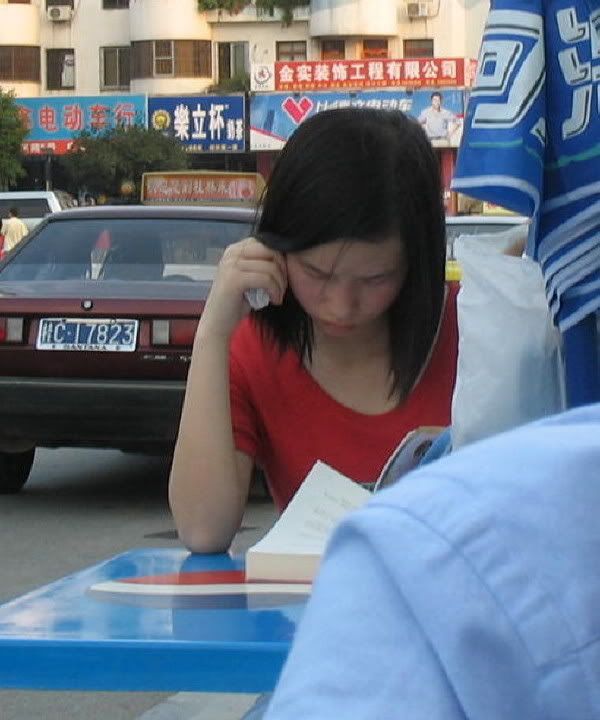 In China a young woman can sit alone in a public place and
feel comfortable. No one will approach her.
In China a young woman can sit alone in a public place and
feel comfortable. No one will approach her.
在中国的一名年轻女子独自舒适坐在公共场所。没有人会接近她。
如果妇女似乎有这么多的自由,其中包括中国妇女高自杀率是什么原因吗?好吧,我发现,自杀率是有关的,大多是在农村,没有城市。但是,为什么要这么多的中国农村妇女想死吗?我不知道。如果它仅仅是一个贫穷的情况下,那么更多的男人会自杀,而不是妇女。我已经写了一些世界上自杀率在这里的原因
今天,老人以及年轻,富人以及穷人,农村以及城市,男性和女性 - 每个人都已经抛弃了传统的中国服饰。如果你想一个看到女人穿Chipao,你需要去看戏剧,舞蹈表演,特殊的派对或商店大量绣花花式Chipao出售。也许中国在婚礼上穿,但有人告诉我,这个传统已经淡出。往往新娘穿西方的白色长流动礼服。因此,西方的影响力太大了!
Chinese cities are extraordinarily safe. You can feel it while walking on the street. The people are non-interfering, decent and avoid looking at you. Before we left for China we knew that crime was low in China but we saw it for ourselves. Young women with shopping bags freely do their shopping even after nine p.m. Eve-teasing seems to be non-existent. This inspite of the fact that roads are often deserted.
中国的城市是非常安全的。走在大街上时,你可以感受到它。人们不干扰,体面,并避免在眼神看着你。在我们离开中国之前,我们知道中国犯罪率是低,但我们亲生体验了。甚至在晚上九点,提着购物袋的年轻妇女自由的购物。调戏妇女似乎是不存在的。尽管道路上经常空荡无人的事实。
 In China a young woman can sit alone in a public place and
feel comfortable. No one will approach her.
In China a young woman can sit alone in a public place and
feel comfortable. No one will approach her.
If women seem to
have so much freedom, what is it about the high suicide rate amongst Chinese
women? Well, I found out that the suicide rate is relevant mostly in the rural
areas, not urban. But why should so many women in rural areas of China wish to
die? I don’t know. If it is simply a case of poverty, then more men would commit
suicide, not women. I have written more about some of the reasons for suicide
rates of the world here.
在中国的一名年轻女子独自舒适坐在公共场所。没有人会接近她。
如果妇女似乎有这么多的自由,其中包括中国妇女高自杀率是什么原因吗?好吧,我发现,自杀率是有关的,大多是在农村,没有城市。但是,为什么要这么多的中国农村妇女想死吗?我不知道。如果它仅仅是一个贫穷的情况下,那么更多的男人会自杀,而不是妇女。我已经写了一些世界上自杀率在这里的原因
- This is why right attitude matters. I have seen many chinese who are very hard working even thouh not highly educated. India has many lessons from china.这是为何正确的态度多么重要。我已经看到许多中国人非常辛勤工作既使没有受过高等教育。印度从中国得到许多经验教训。

No comments:
Post a Comment